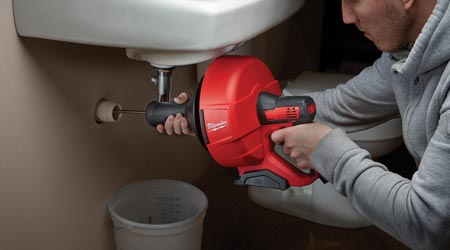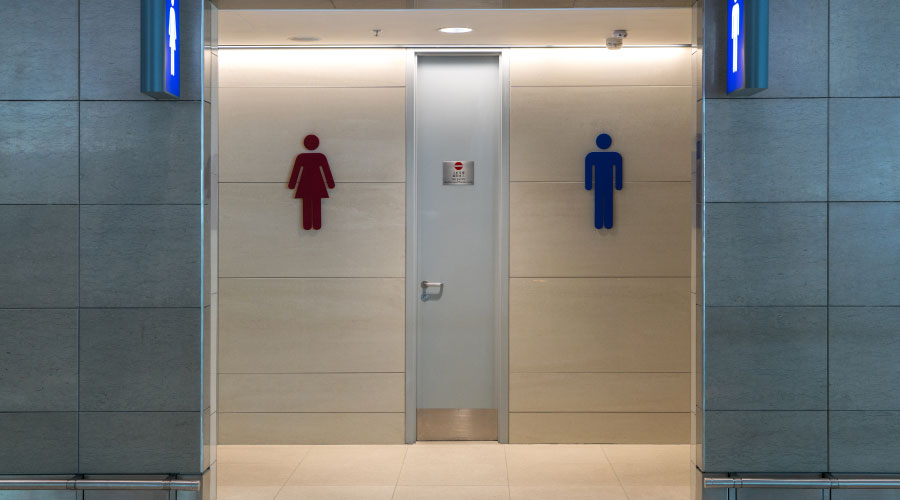 One essential step in specifying the most appropriate drain cleaning equipment is to list all drains by cleanout location, pipe diameter, drain length, type of piping and the type of material likely to be encountered.
One essential step in specifying the most appropriate drain cleaning equipment is to list all drains by cleanout location, pipe diameter, drain length, type of piping and the type of material likely to be encountered.Drain Cleaning: Specifying for Success
By understanding the types of drains and pipes a facility has, managers can better specify the proper products to clear clogs.
Specifying appropriate drain cleaning equipment is a three-stage process.
First, managers should list all drains by cleanout location, pipe diameter, drain length, type of piping — cement, steel, cast iron, PVC, wood, aluminum, or glass — and the type of material encountered in each drain. For example, glass piping would be used to carry highly corrosive materials.
Second, managers should select the equipment best suited to each drain on the list, paying attention to tools with the most versatility that will work for multiple purposes.
Third, managers need to get several cost quotes for the equipment and select the most appropriate equipment based on quality, versatility, and durability.
When the drain inventory is complete, managers can group similar drains and match them with the appropriate cleaning tools. Sink, shower, tub, toilet, kitchen, and floor drains all have traps, which serve two purposes. They provide a water seal to prevent sewer odor backup, and they stop objects from lodging further into the pipe, where they are harder to retrieve.
Technicians need flexible tools to address blockages in these drains, but the equipment does not have to reach more than a few feet because the blockage often occur at the trap. These drain traps are all about the same diameter, so a short manual or power-drill-driven snake will work for all of them.
A different solution is needed if the trap is clear. Drain lines can become blocked by buildup, such as kitchen grease, soap residue, or solid objects that get past the traps and lodge further down the drain. This blockage might slow the flow or eventually completely stop the pipe from draining.
To find the clog, the first step is inspection. A blocked riser vent creates a vacuum in the drain that will stop the flow somewhere below it and syphon all the water out of traps connected to the drain. Odors coming from the drain opening, accompanied sometimes by a gurgling sound, indicate a blocked vent.
The next step is to find the clog’s location. Even an experienced plumber can be deceived about the type of blockage and location and, as a result, waste a great deal of time working on the wrong problem or location.
The best way to determine the clog’s location is to use a camera system — specifically, a camera head, a fiber-optic cable long enough to reach the collector at the end of the drain, and an attached computer screen with recording capability. Clearing the pipe requires a jetter for semi-solids, such as grease, or a sectional or drum-cable drain cleaner for solid objects, such as tree roots, metal, wood, bones, jewelry, toys, and tools.
The image from the camera will help in deciding on the type of cable end, holder, and attachment to use to remove the clog. Some cable ends have a drop end built in, while others allow technicians to attach more cable — in some cases, directly to an attachment without using an attachment holder.
A drop end has a spiral leading end and a swivel attachment end that allow gravity to send the cable further down the pipe. An open hook end is useful for snagging paper, lint, hair, wire and other soft materials. The spiral wire end penetrates the clog and holds it as the cable is withdrawn from the pipe.
A tree root can act like a dam by stopping objects that otherwise would pass through the pipe. This type of clog might require hooking onto the object and retracting it, and then using a cutter attachment with saw teeth on both sides. The right cutter expands to the full pipe diameter, cutting the roots off flush with the inside diameter.
Thomas Westerkamp is a maintenance and engineering management consultant and president of the work management division of Westerkamp Group LLC, www.westerkampgroup.com.
Related Topics:













